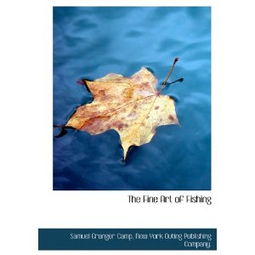Content:
Introduction: Fishing is an enjoyable and relaxing activity that can be made even more enjoyable with the right equipment. One of the most crucial components of fishing gear is the fishing hook. The right hook can make the difference between a successful day on the water and frustration. In this article, we will discuss the essential tips for selecting the perfect fishing hook for your needs.
Understand the Types of Fishing Hooks: Before diving into the details of choosing a fishing hook, it's essential to be familiar with the different types available. Here are some common types of fishing hooks:
a. Jig Hooks: Ideal for jigging techniques, these hooks have a wide gap and a short shank, allowing them to be inserted into a jig head. b. Circle Hooks: These hooks have a circular bend, which helps in reducing the chances of gut hooking and increases the likelihood of releasing undersized fish. c. Aberdeen Hooks: Known for their sharp points and strong construction, these hooks are perfect for catching bottom-dwelling fish. d. Treble Hooks: These hooks consist of three points and are versatile for various fishing techniques. e. Sinker Hooks: Designed for bottom fishing, these hooks have a long shank and a wide gap to accommodate sinkers.
Consider the Fish Species: Different fish species have varying preferences when it comes to hook size and shape. To ensure success, consider the following:
a. Size: Choose a hook size that matches the size of the bait or lure you are using. A smaller hook is suitable for smaller fish, while a larger hook is ideal for larger fish. b. Shape: Certain fish species are more attracted to specific hook shapes. For example, trout are more likely to bite on a finer, more delicate hook, while bass may prefer a sturdier, more robust hook.
Hook Material: The material of the fishing hook plays a significant role in its durability and effectiveness. Here are some common hook materials:
a. Stainless Steel: Known for its corrosion resistance and strength, stainless steel hooks are suitable for various fishing conditions. b. High Carbon Steel: These hooks are harder than stainless steel, making them excellent for catching strong, toothy fish. c. Titanium: Lightweight and corrosion-resistant, titanium hooks are ideal for saltwater fishing and fly fishing.
Hook Strength: When selecting a fishing hook, consider the strength required to land the fish you're targeting. Here are some factors to consider:
a. Wire Diameter: A thicker wire diameter indicates a stronger hook. However, be cautious not to choose a hook that is too strong, as it may lead to a difficult hookset. b. Point Strength: The point of the hook should be sharp and durable to penetrate the fish's mouth effectively.

Hook Gauge: Hook gauge refers to the thickness of the wire used to make the hook. A lower gauge number indicates a thicker wire and a stronger hook. Here's a quick guide:
a. Light-Gauge Hooks (1-6): Suitable for smaller fish and delicate baits. b. Medium-Gauge Hooks (7-10): Versatile for various fish species and baits. c. Heavy-Gauge Hooks (11-14): Ideal for larger fish and heavier baits.
Additional Features: Some fishing hooks come with additional features that can enhance your fishing experience:
a. Barbed Points: These hooks have a small barb on the point, making it easier to set the hook. b. Offset Shanks: These hooks have a bent shank, allowing for better hookups and reducing the risk of snags. c. Double Points: These hooks have two points, increasing the chances of a successful hookset.
Conclusion: Choosing the perfect fishing hook is a crucial step in ensuring a successful fishing trip. By understanding the different types of hooks, considering the fish species, selecting the appropriate material and strength, and taking note of additional features, you'll be well on your way to mastering the art of hook selection. Remember, the right hook can make all the difference between a great day on the water and a frustrating experience. Happy fishing!












